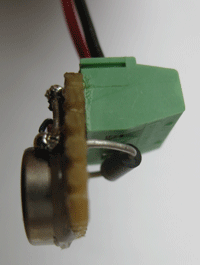Downloads
Video
Minimal Bach-y-Rita experiment, November 2008.
This movie shows some examples of a two alternative forced choice ball tracking experiment where the subject (Andy Clark) has to say whether a ball is rolling towards his left or right hand. He is blind-folded and wearing ear plugs so he has to track the movement of the ball using the pattern of vibration on his abdomen which is driven by a head-mounted camera. The vibrotactile corset only has 6 motors which are either on or off depending on whether a corresponding region of a thresholded camera image is predominantly black or white.
Ball batting demonstrations, Open University, February 2009.
These movies show a visitor to the Open University trying out a head-mounted version of our TVSS ball batting experiment. He asked to try it out just as we were packing away so we didn't have a blind-fold available. However, he did keep his eyes shut during the trials and one of the movies demonstrates that he did miss a few of the balls as they rolled towards him.
Successful hit 95.4MB 8 seconds duration.
Successful hit 2 76.8MB 6 seconds duration.
Miss 101.9MB 8 seconds duration.
Software
Arduino
The Arduino code for controlling vibration motors will be available online soon.
Processing
The Processing code for analysing a webcam image and for communicating with an Arduino microcontroller will be made available online soon.
openFrameworks
The openFrameworks code for doing colour tracking, image thresholding and for communicating with an Arduino microcontroller will be made available online soon.
DIY instructions
We are currently developing an instructable that shows how to build a vibrotactile array out of cheap off-the-shelf components.

